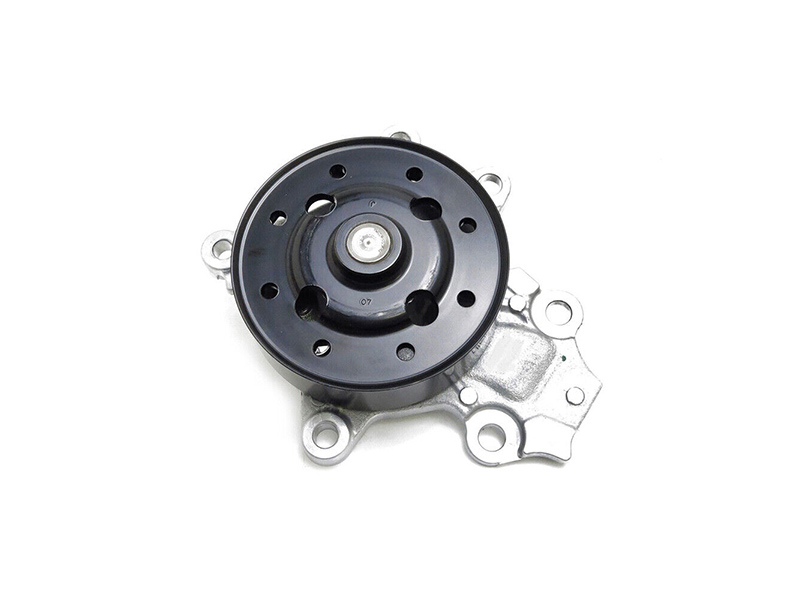The water pump is a crucial component in a car’s cooling system, responsible for circulating coolant through the engine to maintain an optimal operating temperature. Without a properly functioning water pump, an engine could overheat, leading to significant damage and expensive repairs. In this article, we’ll explore the function, operation, common issues, and maintenance tips for the water pump in modern cars.
1. What is a Water Pump?
A water pump in a car is a mechanical device that helps move coolant from the radiator to the engine block and back, ensuring the engine stays cool under all operating conditions. It plays a critical role in maintaining the right temperature balance for efficient combustion and overall engine performance.
Most water pumps are located near the front of the engine and are driven by the engine’s crankshaft through a belt, chain, or timing belt, depending on the car’s design.
2. How Does a Water Pump Work?
The water pump operates by using centrifugal force to propel coolant through the cooling system. Here’s a breakdown of the process:
- Coolant Flow: When the engine runs, the crankshaft rotates, turning the water pump’s impeller. The impeller, which is a fan-like component inside the pump, spins to create a low-pressure area that draws coolant from the radiator.
- Circulation: The impeller’s rotation forces the coolant to move through the engine block, where it absorbs heat generated by the engine.
- Return to Radiator: After absorbing the heat, the coolant travels back to the radiator, where it cools down before starting the cycle again.
This continuous process ensures that the engine doesn’t overheat and operates within a safe temperature range.
3. Signs of a Failing Water Pump
While water pumps are generally durable, they can wear out over time, especially in high-mileage vehicles. Here are common signs that your car’s water pump may be failing:
- Coolant Leaks: A leaking water pump is one of the most obvious signs of a problem. This usually happens due to worn-out seals or gaskets. If you see coolant pooling under your car, especially near the engine’s front, it’s time to inspect the water pump.
- Overheating Engine: If the water pump fails, the coolant cannot circulate properly, leading to engine overheating. This is a serious issue and should be addressed immediately to avoid engine damage.
- Unusual Noise: A whining or grinding noise from the front of the engine could indicate a loose or worn-out water pump bearing. This sound often intensifies as the engine speed increases.
- Steam from the Radiator: If you notice steam coming from under the hood, it may be a sign that the water pump isn’t effectively circulating coolant, causing the engine to overheat.
- Rust or Corrosion: Over time, mineral deposits from the coolant can cause the water pump’s components to rust or corrode. This can affect the pump’s efficiency and may lead to failure.
4. Common Causes of Water Pump Failure
Water pumps can fail for several reasons, including:
- Wear and Tear: Like any mechanical component, a water pump has a limited lifespan. Most water pumps last between 60,000 and 100,000 miles, depending on the vehicle and driving conditions.
- Improper Coolant: Using the wrong type of coolant or failing to change it at regular intervals can lead to corrosion inside the water pump, damaging its seals and impeller.
- Belt Issues: Many water pumps are driven by a belt (such as a serpentine or timing belt). If the belt becomes loose, frayed, or breaks, the water pump won’t function properly.
- Faulty Bearings: The bearings inside the water pump can wear out over time, leading to noise and potential failure.
5. Water Pump Maintenance and Replacement
Maintaining your car’s cooling system is key to extending the life of the water pump. Here are some tips for keeping your water pump in good working order:
- Regular Coolant Flushes: Follow your vehicle’s maintenance schedule for coolant flushes. This prevents corrosion and keeps the cooling system clean.
- Check for Leaks: Regularly inspect the area under your vehicle and around the engine for signs of coolant leaks.
- Monitor Temperature Gauge: Keep an eye on your car’s temperature gauge. If it starts running hotter than usual, have your cooling system checked immediately.
- Replace the Water Pump at Intervals: In many vehicles, the water pump is replaced as part of the timing belt service. It’s recommended to replace the water pump at the same time since the components are interconnected and typically have similar lifespans.
- Inspect Belts: Periodically check the condition of your serpentine or timing belt for signs of wear. A damaged or worn-out belt can affect the water pump’s performance.
6. Cost of Water Pump Replacement
The cost of replacing a water pump varies depending on the make and model of the vehicle, but it typically ranges between $300 and $750, including parts and labor. In some cases, the water pump is located behind the timing cover, requiring additional labor to access, which can increase the overall cost.
7. Conclusion
The water pump is a vital component of your car’s cooling system, ensuring your engine operates at the right temperature. By understanding how the water pump works and recognizing the signs of failure, you can prevent overheating issues and maintain your engine’s health. Regular maintenance and timely replacement of the water pump will keep your vehicle running smoothly and help avoid costly repairs in the future.
